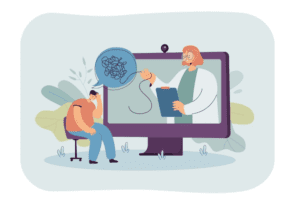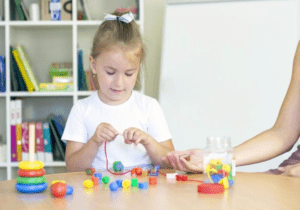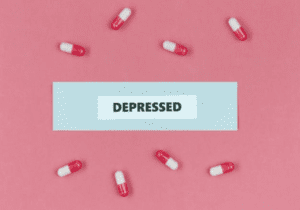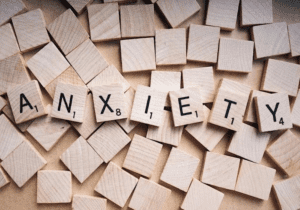Understanding Trauma Bonding
This article has been researched and written by Moni El Ramlawy. AI has not been used in producing this article.
Trauma bonding is a confusing emotional attachment that forms between a person and someone who repeatedly harms, manipulates, or mistreats them. It’s a relationship where “love” feels inconsistent. It’s a relationship fueled by cycles of abuse and intermittent kindness. This dynamic can occur in romantic relationships, family systems, friendships, and even workplaces.
So… what is “trauma bonding” really?
At its core, trauma bonding happens when abuse is paired with moments of warmth or affection. Your brain starts to think the comfort you feel after being hurt is the same as love or safety. Over time, the nervous system learns to crave those “good” moments, even if they are rare, because they temporarily soothe the pain caused by the same person. This cycle creates an emotional dependency – making it difficult for someone to leave, even when they know the relationship is harmful.
You may read this and think, how did I get stuck in this pattern? Or how did this even begin? This kind of relationship usually begins with affection and connection until criticism, neglect, manipulation, or emotional withdrawal begins. The type of abuse may be emotional, physical, or sexual. Then comes the reconciliation – apologies, affection, or small acts of kindness. Then there’s a sense of calm. The cycle then resets and creates hope for lasting change. This cycle creates an emotional dependency – making it difficult for someone to leave, even when they know the relationship is harmful.
Why do people stay?
There is often a misconception that staying in such a relationship is about weakness. However, the reality is sometimes rooted in attachment needs. If a person experienced neglect or inconsistent caregiving in childhood, unpredictability can feel familiar – even “normal”. Another reason is, there’s always hope for change. Small acts of kindness feel like a breath of fresh air and proof that things can be different. Other times, people stay out of fear when control, intimidation, financial dependence, or isolation are involved. They feel trapped.
Breaking the Cycle
Healing from a trauma bond takes time, safety, and support:
- Recognize the Pattern: Naming what’s happening can reduce shame and confusion.
- Create Distance: Physically and emotionally stepping back helps break the pattern.
- Seek Support: Trauma-informed therapy, support groups, or trusted friends can provide perspective.
- Rebuild Self-Trust: Learning to listen to your instincts and boundaries is key.
- Address Underlying Trauma: Understanding your attachment history can help prevent repeating the pattern.
Trauma bonding is not a sign of weakness – it’s a human survival response. Breaking free requires compassion for yourself, a recognition of how your nervous system has adapted, and steady, consistent support.
Gentle Parenting: What is it and How to Try it Yourself
When it comes to raising children, no one has all the answers. Every parent and child have unique challenges and needs. Navigating these individual circumstances along with ever-changing environments, such as school …
How to Improve Your Relationship with Your Children – A Psychologist’s Guide
The modern family’s lifestyle leaves us shuffling from school to sports practice, family events, visiting friends, and everything in between. As society evolves to become more on-the-go and technologically advanced, w…
Tips for Communicating With Someone Who is Depressed
Knowing what to say to someone who is struggling with depression can be challenging. Perhaps you are afraid you might say the wrong thing. Or maybe you will say something that makes their day even worse? Maybe you fee…
Who Can Benefit From Couple Counseling?
Relationships are far from perfect. Each person brings his or her own ideas, values, opinions, and personal history into a relationship, and they don’t always match their partner’s. Those differences don’t necessaril…
What is EMDR Therapy and How Does it Help People?
Since the days of Freud, we’ve come to expect that managing our trauma is a lifelong journey. However, this is not the case. Eye Movement Desensitization and Reprocessing therapy (EMDR therapy) was developed in 1990 …
Everything You Need to Know About Couples Therapy
It’s perfectly expected for couples in relationships to face challenges from time to time. Every relationship has its unique needs and challenges. Couples see therapy for a number of unique reasons. From miscommunicat…
Does Social Media Cause Depression?
According to recent estimates, roughly 4 billion people worldwide use various social media platforms, including Facebook, Twitter, Instagram, and LinkedIn. It’s not hard to believe. When you take a look around a crowd…
Child Development: Play Therapy in Dubai
Every child deserves to feel safe, empowered, understood, connected, and loved. Play therapy is based on the foundation of providing a safe environment for children to process their emotions and develop the social, em…
The Future of Depression Treatment
According to the World Health Organization (WHO), depression impacts more than 264 million people globally. Once diagnosed, depression treatment can be by medications, psychotherapy, or a combination of the two. While…
How to Talk to Your Therapist When You Have Social Anxiety
Social anxiety disorder (SAD), also called a social phobia, is characterized by intense fear or anxiety of being negatively evaluated, judged, or rejected in a social situation. Individuals with social anxiety often …











